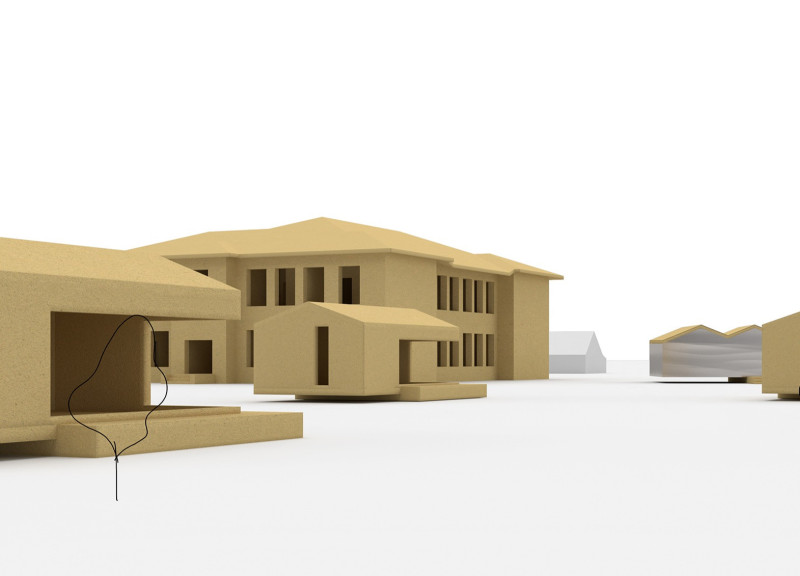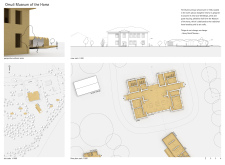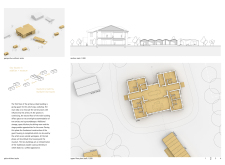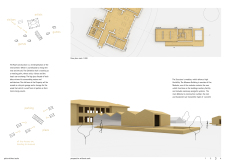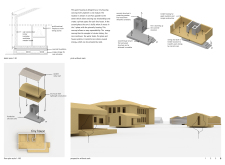5 key facts about this project
The Omuli Museum of the Horse is located in the north Latvian biosphere reserve and represents a revitalization of the Olumni primary school, built in 1936. This museum focuses on traditional horse breeding and its related crafts. The design aims to support artistic practices through careful renovations that encourage community involvement and interaction among artists, visitors, and residents.
Design Framework
The museum's layout adopts a modular design approach, transforming the original school into various functional spaces. The first floor serves as an artists' day workshop, providing a space for both local and visiting artists to work. Upstairs, accommodations are available for two artists and a groundskeeper, creating a supportive environment for artistic exploration.
Integration of Old and New
Integration of modern elements with the existing structure is a key feature of the design. The roof combines contemporary features with the historic school building. This careful blend maintains the character of the original structure while adapting it for modern use. The overall layout promotes interaction across different areas, including workshops, exhibitions, and social spaces, contributing to a lively cultural setting.
Material Composition
Materials play an important role in the museum's character. The primary choices are construction lumber and concrete. The use of wood connects to Latvia's traditional building practices, reinforcing local heritage. The concrete core and foundation ensure stability, aligning with the museum's functional needs while supporting sustainability goals.
Design Details
Large glass façades dominate the exhibition hall and communal areas, allowing abundant natural light to enter. This connection with the outside creates an inviting atmosphere, making the museum feel open to the surrounding environment. The renovation of an old barn into a bicycle garage and storage for wood fuel highlights the project’s focus on sustainability, reflecting a thoughtful approach to reusing resources while honoring local culture.


